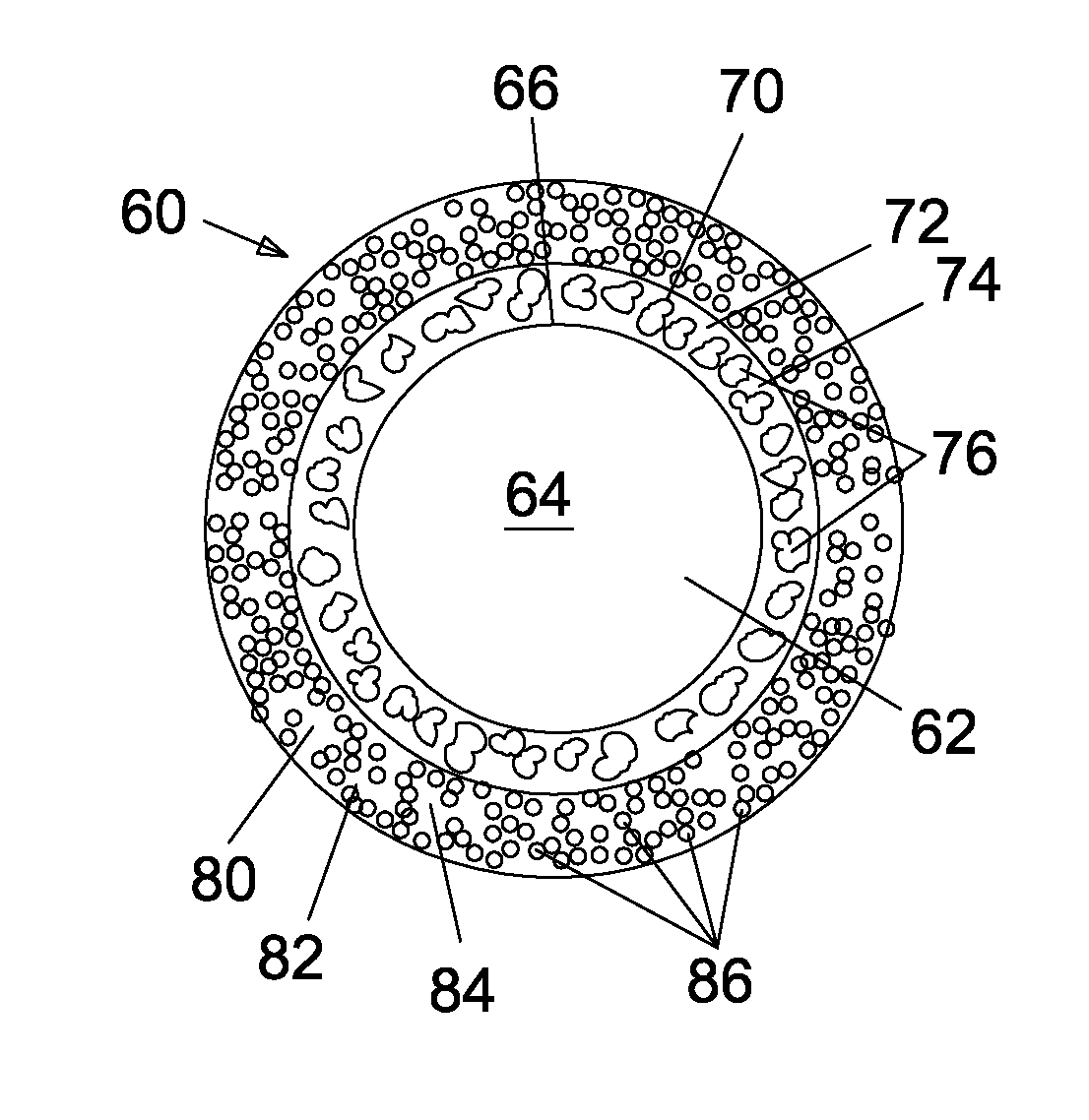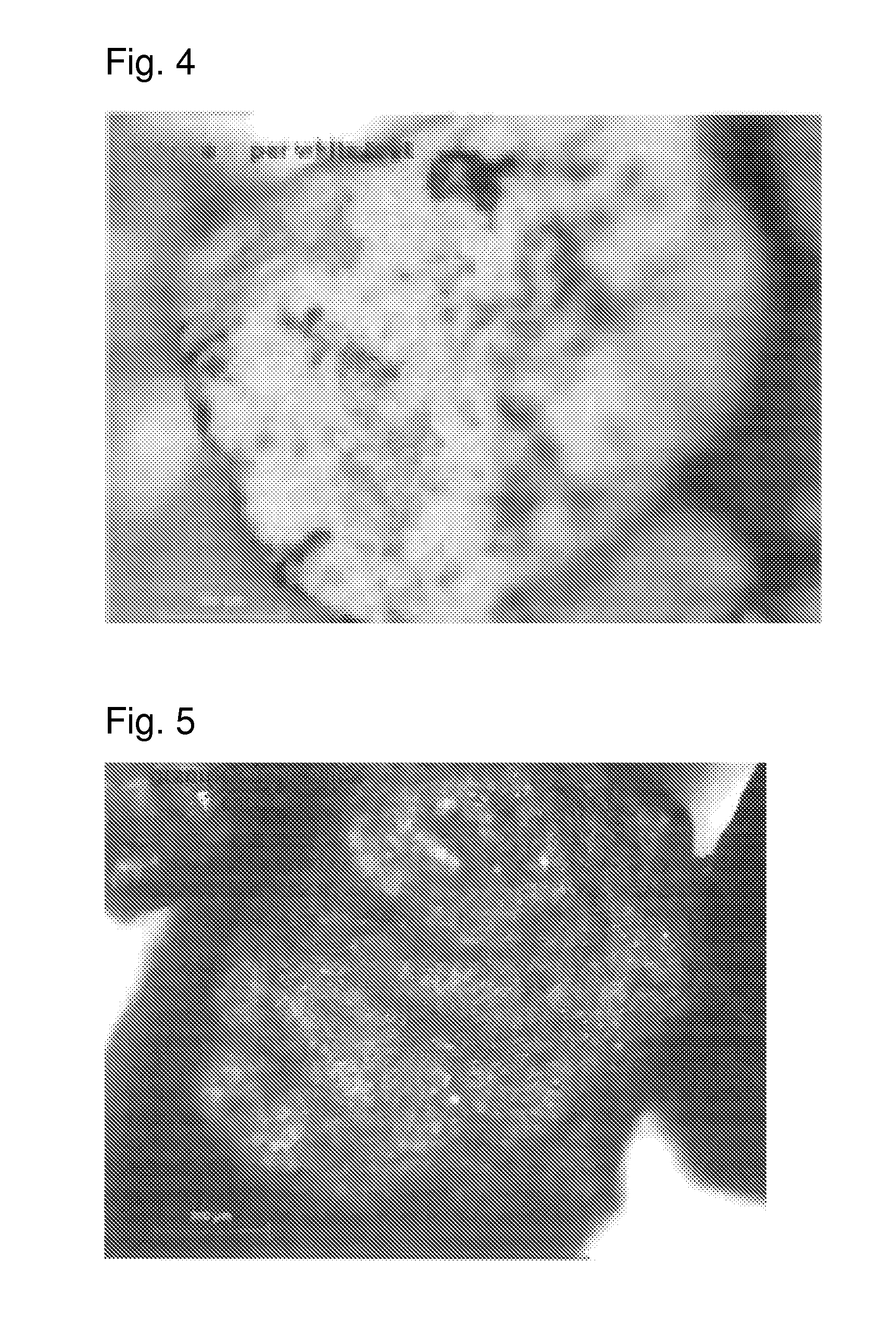Roofing Granules, Roofing Products Including Such Granules, and Process for Preparing Same
a technology for which is applied in the field of roofing granules and roofing products, can solve the problems of reducing the range limiting the palette of colors which can be used in manufacturing roofing granules, and prone to so-called “staining” problems of conventional coatings, etc., to achieve the effect of improving the staining resistan
- Summary
- Abstract
- Description
- Claims
- Application Information
AI Technical Summary
Benefits of technology
Problems solved by technology
Method used
Image
Examples
example 1
[0072]Mineral particles with size between #12 and #40 mesh (#93 white granules available from CertainTeed Corp., Norwood, Mass., an example of which is shown in the photograph of FIG. 4) were coated with a silica coating derived from sol-gel process and containing organic pigments. The sol-gel coating is prepared in the following manner: a solution of tetraethoxysilane (30 ml, TEOS 99%, Aldrich) in aqueous 0.1 M hydrochloric acid (210 ml) is prepared at 60 degrees C. for 1 hour, then 21 ml of ammonium hydroxide (1M) is added to yield colloidal silica. After one hour of stirring to promote maturation of the colloidal silica, 90 ml of an aqueous dispersion of polyvinyl alcohol (20,000 g / mole, Aldrich, 15 wt %) is added in the solution. At the end of the addition, 2.8 g of organic black pigment (Palmogen L0086, BASF Corp. Florham Park, N.J.), 7.5 g of ultramarine blue pigment (FP4O, Ferro Corp., Columbus, Ohio), and 0.18 g of organic red pigment (Paliogen Rot L3S8OHD, BASF Corp., Florh...
example 2
[0075]Mineral particles with size between #12 and #40 mesh (#11 grade rhyolite mineral particles available from CertainTeed Corp., Norwood, Mass., FIG. 6) were coated with a silica coating derived from sol-gel process and containing organic pigments. The sol-gel coating is prepared in the following manner: A solution of tetraethoxysilane (30 ml, TEOS 99%, Sigma-Aldrich, Milwaukee, Wis.) in aqueous 0.1 M hydrochloric acid (210 ml) is prepared at 60 degrees C. for 1 hour, then 21 ml of ammonium hydroxide (1M) is added to yield colloidal silica. After one hour of stirring to promote maturation of the colloidal silica, 90 ml of an aqueous dispersion of polyvinyl alcohol (20,000 g / mole, Sigma-Aldrich, 15 wt percent) is added in the solution. At the end of the addition, 5.75 g of white pigment Ti-Pure R-101 (DuPont de Nemours, Wilmington, Del.) and 2 g of organic pigment Ropaque (Rohm & Haas) are added under vigorous stirring. Table 3 summarizes the composition and amount used in the expe...
PUM
| Property | Measurement | Unit |
|---|---|---|
| temperature | aaaaa | aaaaa |
| temperature | aaaaa | aaaaa |
| reflectance to | aaaaa | aaaaa |
Abstract
Description
Claims
Application Information
 Login to View More
Login to View More - R&D
- Intellectual Property
- Life Sciences
- Materials
- Tech Scout
- Unparalleled Data Quality
- Higher Quality Content
- 60% Fewer Hallucinations
Browse by: Latest US Patents, China's latest patents, Technical Efficacy Thesaurus, Application Domain, Technology Topic, Popular Technical Reports.
© 2025 PatSnap. All rights reserved.Legal|Privacy policy|Modern Slavery Act Transparency Statement|Sitemap|About US| Contact US: help@patsnap.com



